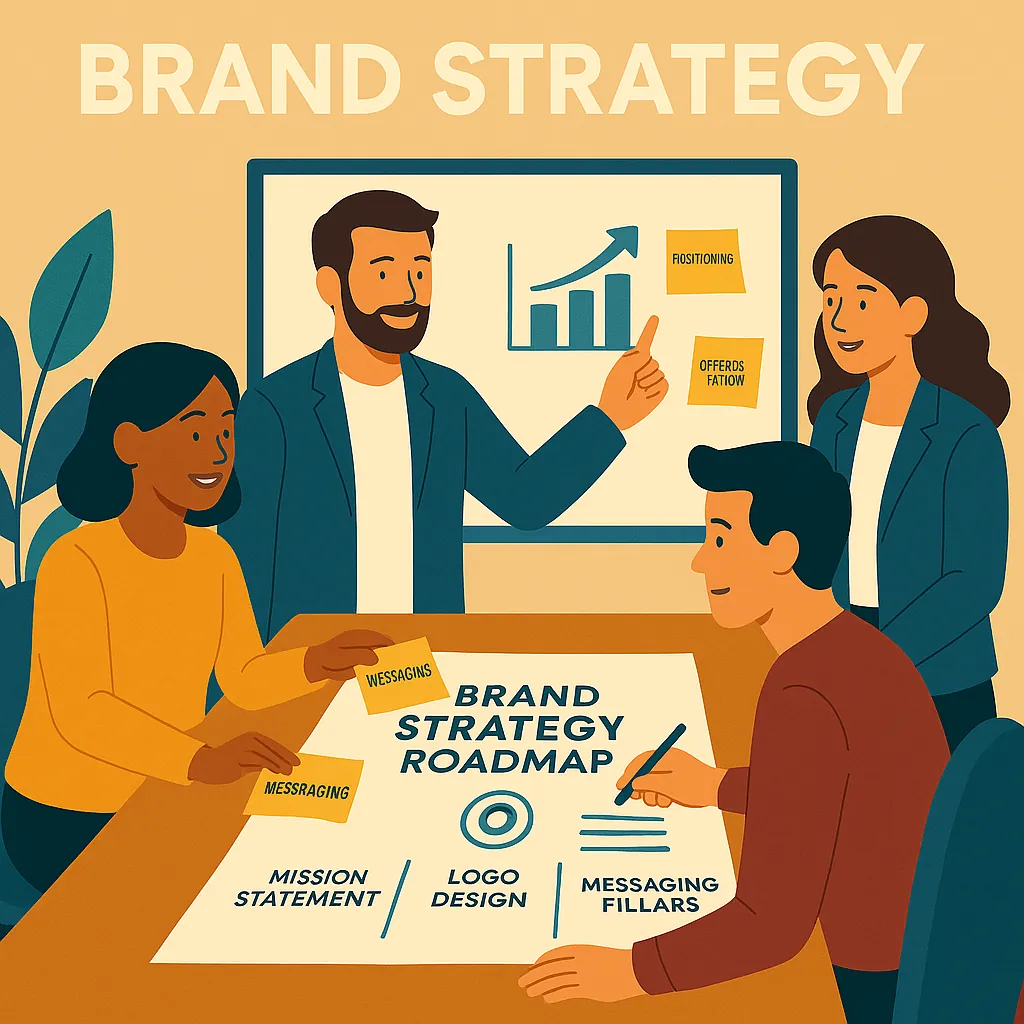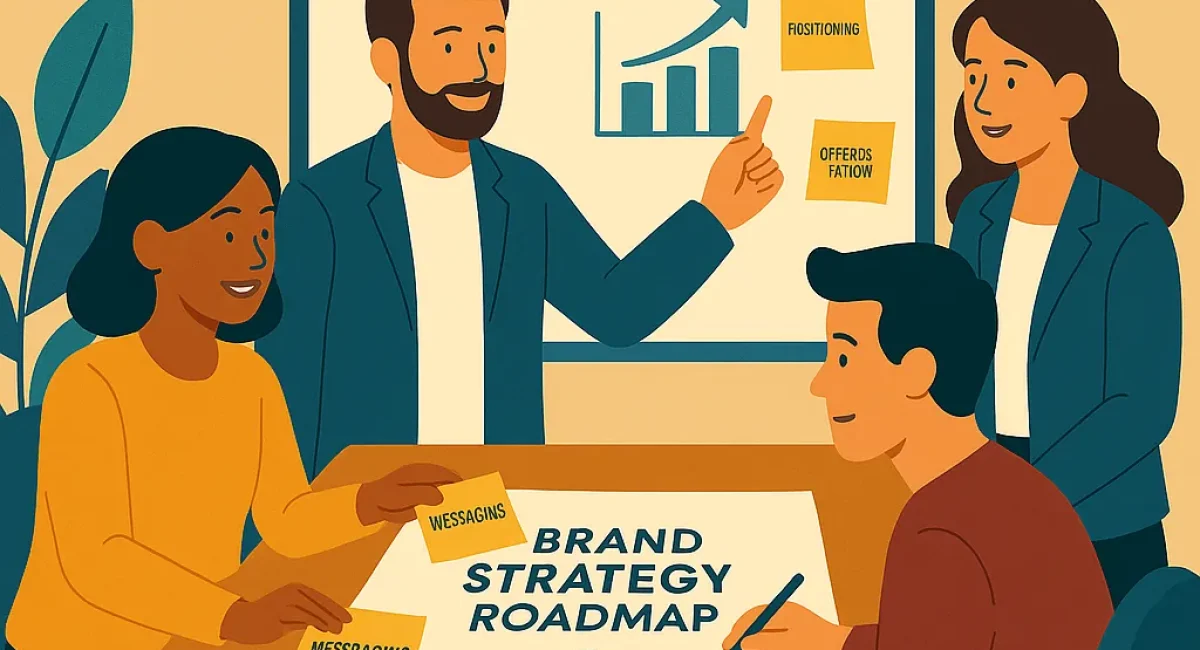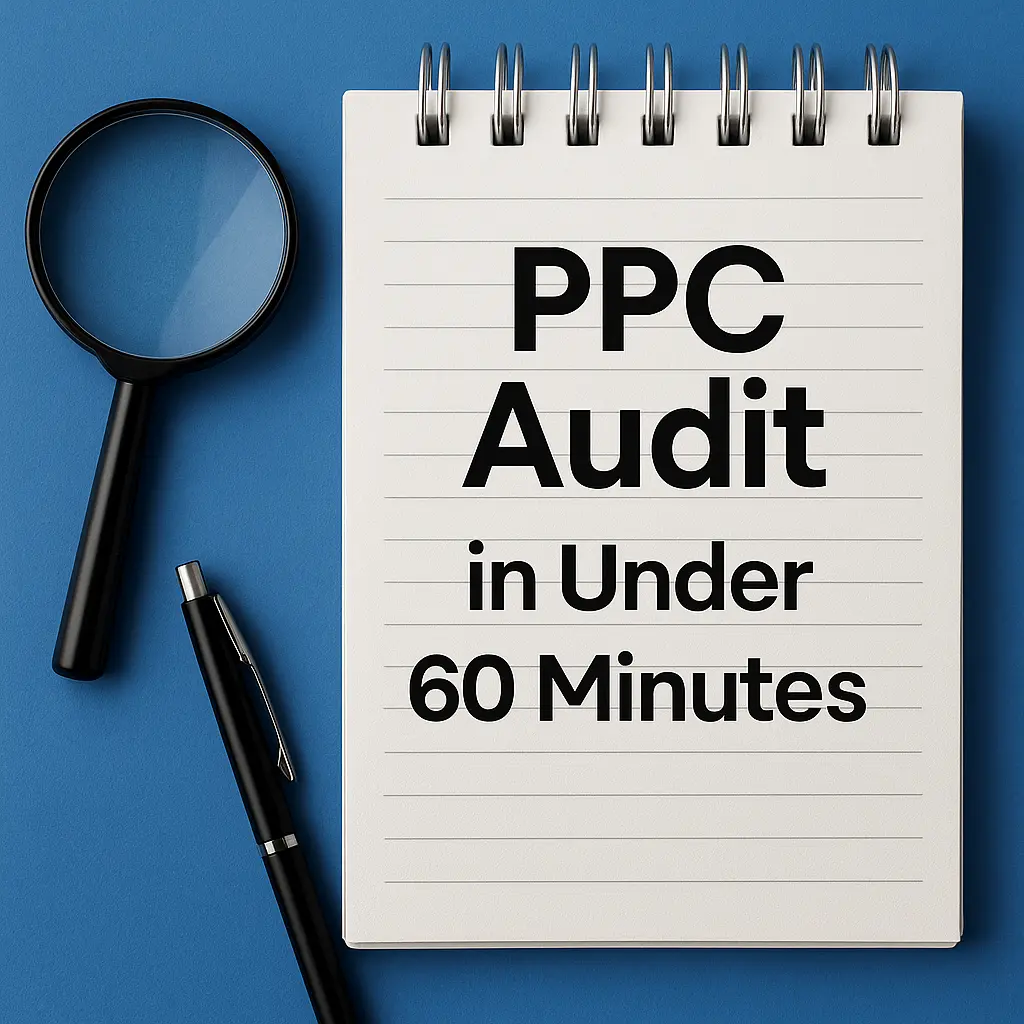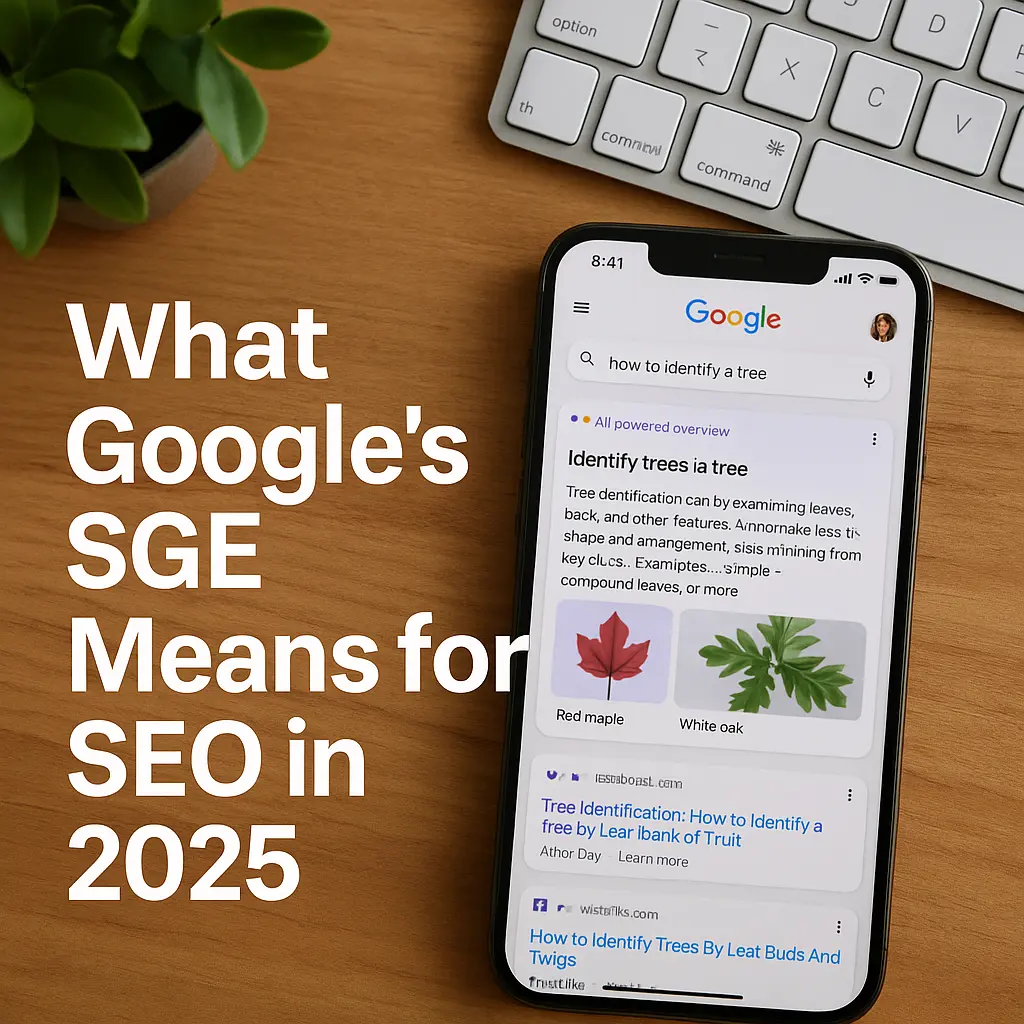
Introduction
In crowded B2B markets, a strong brand may be a business’s most powerful asset. Research by BCG and Google shows that brand-building isn’t just for consumer companies – it boosts return on marketing investment (ROMI), customer advocacy, and even employee satisfaction for B2B firms. In fact, 97% of B2B marketing leaders say branding plays a vital role in building awareness and consideration, and 95% agree it helps differentiate from competitors. B2B brand strategy is especially crucial for SaaS companies and startups, where establishing trust and credibility can make the difference in long sales cycles.
RnD Marketing – a performance marketing agency with deep B2B SaaS experience – understands that without a strong brand in place, even great products risk starting from scratch. In this article, RnD Marketing outlines the key principles of B2B brand strategy (positioning, messaging, differentiation) and how to apply them in a B2B context (long buying cycles, multiple stakeholders, and alignment with demand generation). By mastering these elements, SaaS companies and B2B marketers can build a memorable brand that fuels sustainable growth.
Foundations of a Strong B2B Brand Strategy
Every successful B2B brand is built on a strategic foundation. Here are the core elements of a B2B brand strategy and why they matter:
Brand Positioning
This defines the unique place your brand occupies in the market relative to competitors. Effective positioning identifies who your target customer is, what distinct value you offer, and why you’re the best choice. In B2B markets, positioning often means focusing on a niche or specialized solution where you can lead. A clear brand position ensures all stakeholders understand your company’s value proposition instantly. (For example, RnD Marketing often helps clients pinpoint market gaps and craft positioning that highlights their unique SaaS innovations.)
Messaging and Tone
Your brand messaging encompasses the key messages, value propositions, and personality (tone of voice) that you communicate to your audience. Consistent, customer-centric messaging builds recognition and trust. B2B buyers typically seek detailed information and assurances; your messaging should address their pain points and objectives in clear, jargon-free language. Maintaining a consistent tone across channels – whether it’s authoritative and technical or friendly and consultative – helps humanize your brand. Consistency is key: one study found that maintaining a consistent brand across all platforms can increase revenue by up to 23%. That means every blog post, whitepaper, and sales deck should reinforce the same core message and values, creating a cohesive impression of your brand.
Differentiation
In competitive B2B sectors, brands must actively differentiate themselves. Identify what sets your solution apart – whether it’s an innovative technology, superior customer service, domain expertise, or a unique approach to solving a problem – and weave that into your brand story. Strong differentiation isn’t just about product features; it’s about conveying a unique value that competitors can’t easily claim. Remember that branding is a long-term endeavor: even if your product features evolve, a well-defined brand promise endures. Nearly all marketing leaders agree that brand marketing is pivotal for differentiating a company from competitors. RnD Marketing’s team, for instance, works with B2B startups to uncover their competitive edge and make sure it’s embedded in all branding efforts.
Pro Tip: Document these elements in brand guidelines. Define your positioning statement, key messages, tone of voice, visual identity, and do’s and don’ts. This ensures every team (marketing, sales, product, even R&D) presents a unified brand image. Consistency builds familiarity – and as trust research indicates, buyers are more likely to choose a brand they recognize and trust.
B2B Branding in Practice: Long Sales Cycles & Multiple Stakeholders
Developing a brand strategy for B2B is not the same as for consumer brands. B2B purchases are high-consideration decisions that typically involve long sales cycles and multiple stakeholders. Here’s how these realities impact your brand strategy:
Trust is Paramount
In B2B transactions, your buyers (often committees of executives, managers, and technical experts) must trust your company deeply before committing. Without trust, sales cycles drag on and decision-makers hesitate, whereas “when trust is embedded into the buyer’s journey from the very first touchpoint, deals move faster, friction is reduced, and revenue flows more efficiently.” In other words, brand trust can shorten the long B2B sales cycle by assuring everyone involved that your company is credible and low-risk. To build this trust, a B2B brand strategy should emphasize thought leadership, reliability, and proof of value (through case studies, testimonials, data, and authoritative content). For example, sharing insightful whitepapers or hosting webinars with industry experts can position your brand as a “trusted advisor” – which in today’s market is not just a bonus, but an expectation.
Multi-Stakeholder Messaging
Because B2B deals involve multiple influencers and decision-makers (e.g. a technical lead, a finance officer, an end-user department head), your brand messaging must resonate with diverse concerns. Craft messages that address each stakeholder’s priorities while staying consistent overall. For instance, a SaaS analytics platform might brand itself around “making data-driven decisions easy and secure” – with technical proof points for IT managers, ROI arguments for CFOs, and ease-of-use stories for end users. The core brand promise remains the same, but it’s communicated in language that each audience cares about. Importantly, all customer-facing teams should be aligned on the messaging. Any disconnect between sales, marketing, and product teams can confuse buyers and erode trust. RnD Marketing often consults on sales enablement content to ensure that the value proposition touted in marketing is reinforced by sales reps during one-on-one discussions.
Solution-Focused, Not Just Product-Focused
B2B branding should focus on solving customer problems and delivering business outcomes, rather than just pushing product features. A compelling brand narrative connects your solution to the buyer’s broader mission. This often means using more educational and consultative content. According to industry data, B2B buyers are far along their purchase journey by the time they speak to sales, often completing 57–70% of research independently. They will have formed impressions of your brand via your website, content, LinkedIn presence, and reviews. A brand strategy centered on valuable content and thought leadership ensures that when potential clients research on their own, your brand is consistently framing the conversation. (For example, RnD Marketing’s blog post on “SEO for SaaS: A Comprehensive Guide for B2B Growth” covers useful strategies that establish credibility with SaaS audiences even before any direct contact.)
By recognizing these B2B dynamics, your brand strategy can address the specific trust and information needs of a longer, consultative sales process. It’s about making your brand the safe choice that all stakeholders can agree on.
Aligning Brand Strategy with Demand Generation
A common misconception is that branding and demand generation are opposing forces – one long-term and nebulous, the other short-term and measurable. In reality, they work best hand-in-hand. In B2B SaaS especially, aligning your brand strategy with demand generation campaigns (lead generation, performance marketing, outbound sales, etc.) creates a powerful growth engine.
Brand Drives Better Demand Gen
A strong brand amplifies the results of your marketing and sales efforts. When your company is already known and trusted in the market, advertising click-through rates improve, lead conversion rates rise, and sales cycles shorten. RnD Marketing’s own experience confirms this: companies with established branding see more efficient ROI on performance marketing. This is echoed by research – top-performing B2B brands (with mature brand marketing) generated 46 percentage points higher returns on brand marketing investments than less mature brands, and also enjoyed higher returns on their performance marketing spend. In short, investing in brand building can actually boost the effectiveness of demand-gen tactics across the board.
Demand Gen Feeds the Brand
Conversely, every demand gen campaign should reinforce your brand positioning. Think of each paid ad, email outreach, or webinar as an opportunity to express your brand voice and values. Instead of purely transactional messaging (“Sign up now!”), smart B2B marketers weave in thought leadership and branding even in lead-gen content. For example, a LinkedIn ad promoting a free trial can also highlight a differentiator or tagline that builds brand recall. Consistency between your brand content and your conversion-focused content is key to moving prospects from awareness to decision. Multiple touchpoints, from the first ad click to the follow-up sales call, should feel like parts of one coherent conversation with your brand.
Balancing Short-Term and Long-Term
It’s essential to balance quick wins with long-term growth strategies. Brand strategy is a slow-burning, compounding investment—while demand generation often aims for fast, measurable results. You need both.
Focusing solely on short-term tactics may generate leads today, but it won’t build lasting market differentiation. Long-term plays like consistent content creation, storytelling, and thought leadership are what fuel scalable, sustainable growth. At RnD Marketing, we emphasize this dual approach—running performance-driven campaigns that capture leads now, while building a strong brand presence that reduces acquisition costs and increases conversion rates over time. When brand and demand work together, B2B companies grow faster and more efficiently.
Measurement and Alignment
To align brand and demand efforts, establish metrics for both. Track not just leads and conversions, but also brand health indicators like website traffic growth, branded search volume, social media engagement, and direct feedback from prospects about your reputation. When a strong brand strategy is in place, you’ll notice positive impacts on downstream metrics – for example, higher lead quality or an uptick in referral business (since a trusted brand gets more word-of-mouth). Ensure your marketing and sales teams collaborate closely, sharing insights from campaigns and customer interactions. At RnD Marketing, we often act as the bridge between product, R&D, and marketing teams (true to our name), making sure that brand messaging is consistent across all channels and that insights from demand-gen campaigns inform brand strategy, and vice versa.
Lastly, don’t be afraid to iterate. Brands are not static; as your market evolves, continually refine your positioning and messaging. Solicit feedback from customers on what your brand means to them. This ongoing optimization, grounded in data from your demand generation and customer success efforts, will keep your B2B brand strategy effective and relevant.
Conclusion
Building a compelling B2B brand is an investment that pays dividends across every facet of a SaaS business – from shortening sales cycles to improving marketing ROI. In an environment where buyers have countless options, your brand is often the deciding factor that makes your company the clear, trusted choice. By focusing on core strategy elements (positioning, messaging, differentiation) and tailoring them to the B2B context, even startups can punch above their weight against established competitors.
However, crafting and executing a winning B2B brand strategy is no small feat. It requires a mix of creative storytelling, deep market insight, and consistent execution across all touchpoints. This is where expertise makes a difference. RnD Marketing’s B2B branding team has extensive experience helping SaaS companies and B2B organizations develop brands that not only look great, but also drive tangible business results. Whether you need to clarify your positioning, create impactful content, or align your brand with demand generation, our experts can guide you every step of the way.
Ready to elevate your B2B brand? Contact RnD Marketing today to explore how our branding and marketing expertise can fuel your company’s growth. Let’s build a brand that truly sets you apart and generates demand for years to come.
FAQ
What is B2B brand strategy?
B2B brand strategy is the plan and approach a business uses to shape its identity, reputation, and messaging in the business-to-business market. It encompasses defining the company’s positioning, values, and visual identity, and ensuring consistent messaging that resonates with target business audiences. A strong B2B brand strategy guides how a company differentiates itself from competitors and builds trust with prospects and clients over the long term.
How does B2B branding differ from B2C branding?
B2B (business-to-business) branding differs from B2C (business-to-consumer) in several ways. Business to business branding typically targets a group of decision-makers rather than an individual consumer, so the messaging is often more informational and value-driven, focusing on business outcomes, ROI, and expertise. B2B sales cycles are longer, which means branding efforts emphasize trust, credibility, and relationships over time. In contrast, B2C branding often appeals more to emotion and instant gratification for individual consumers. Essentially, B2B branding is about demonstrating reliability and thought leadership to help inform a considered purchase, whereas B2C branding may prioritize brand image and emotional appeal for quicker consumer decisions.
Why do SaaS companies need a B2B brand strategy?
For SaaS companies selling to other businesses, a B2B brand strategy is crucial to stand out in a crowded tech marketplace. A clear brand strategy helps define your niche and value proposition (so potential clients immediately understand what makes your software unique). It also builds trust – important because businesses entrust critical operations to your SaaS product and want to be confident in your stability and expertise. Additionally, a strong brand makes demand generation more effective; when your SaaS brand is known and respected, marketing campaigns and sales outreach yield better results. In short, B2B brand strategy lays the foundation for long-term customer relationships and sustainable growth, which are vital for SaaS success.





